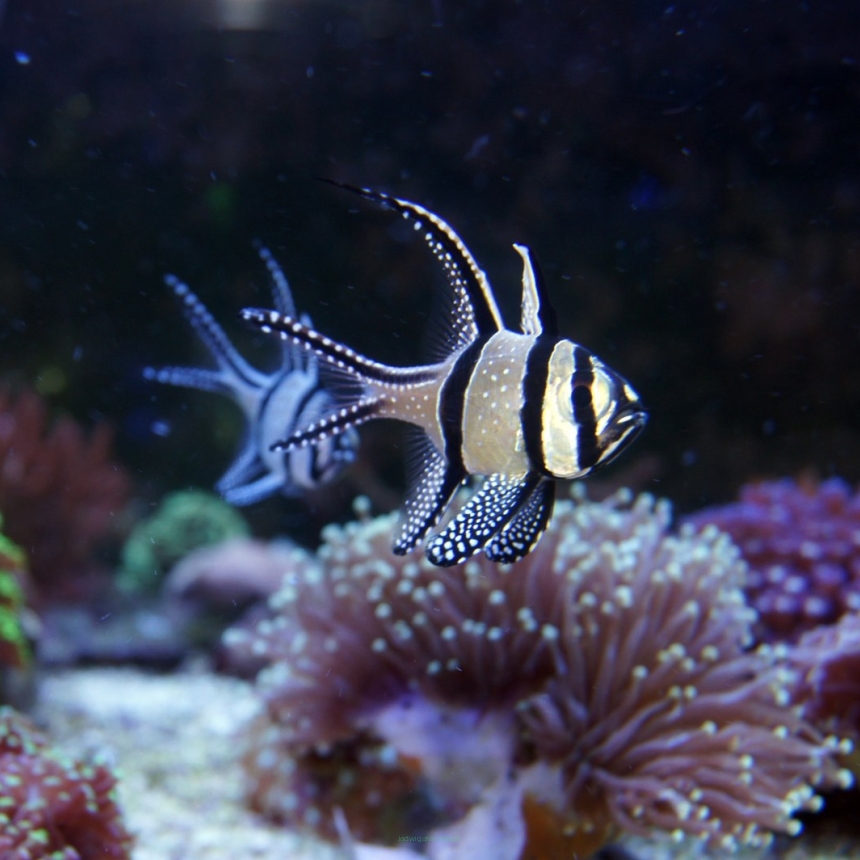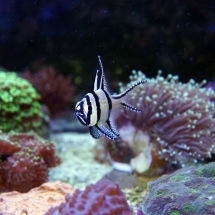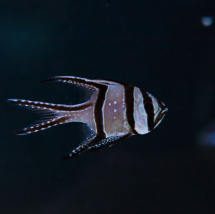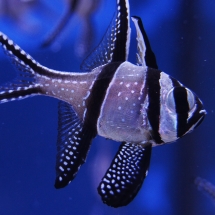Pterapogon kauderni, also known as clarkii clownfish or Banggai cardinalfish, is a species of fish from the pomacentrid family. Here is a general description of this species and information about its cultivation:
Description of Pterapogon kauderni:
- Appearance: Pterapogon kauderni is a small fish with a slender body and distinctive appearance. Its body is covered with three characteristic vertical stripes, typically in black or dark brown against a white background. This fish also has long dorsal and anal fins and rounded pectoral fins.
- Size: Individuals of this species usually reach a body length ranging from 8 to 10 centimeters.
- Behavior: Pterapogon kauderni is peaceful and social. In the wild, they form communities around anemones and other shelters. They are schooling fish and often stay in groups.
Cultivation of Pterapogon kauderni in marine aquariums:
- Aquarium: An aquarium intended for cultivating Pterapogon kauderni should be adequately tailored to their needs. These fish require space for swimming and hiding places or decorations where they can take cover. Arranging rocks or corals to create shelters is a common practice.
- Water Parameters: Maintaining stable water parameters is crucial. The water in the aquarium should have a temperature range of 24-28°C (75-82°F) and the appropriate salinity level, usually between 1.023 and 1.025. Good water filtration and regular water changes are important.
- Feeding: Pterapogon kauderni are omnivorous fish. In the wild, they feed on a variety of organisms, including plankton and small invertebrates. In the aquarium, they can be fed with various sources of food, such as frozen marine fish food, dry food in the form of flakes or pellets, and predatory fish food. It's important to provide them with a diversified diet.
Cultivating Pterapogon kauderni in marine aquariums is popular due to their attractive appearance and peaceful behavior. These fish are a good choice for both beginner and experienced aquarists because of their tolerance towards other fish and their ability to thrive in groups.




 Exists
(29 szt.)
Exists
(29 szt.)